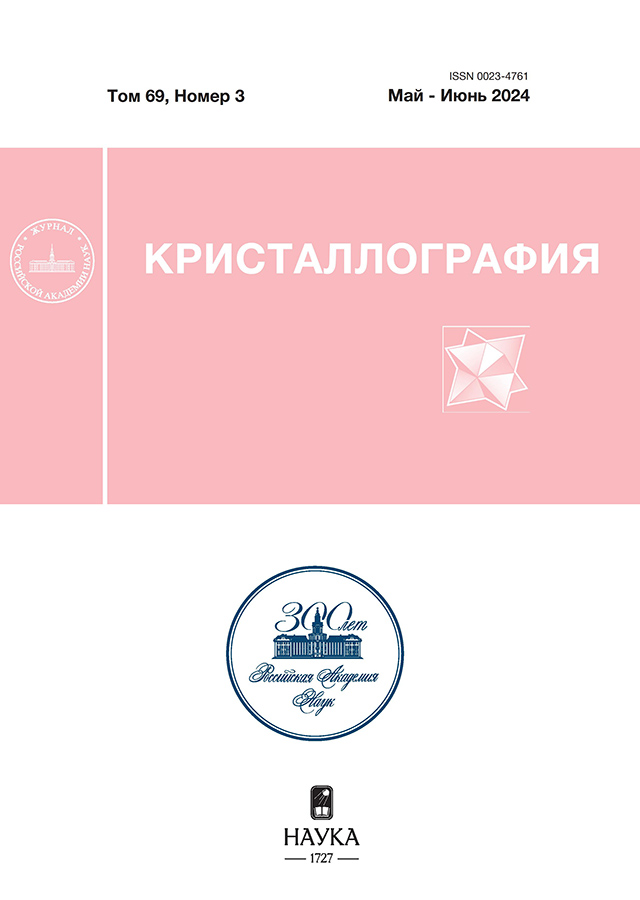Selecting a target for obtaining films of higher manganese silicide using magnetron sputtering
- Authors: Lukasov M.S.1, Arkharova N.A.1, Orekhov A.S.1, Kamilov T.S.2, Klechkovskaya V.V.1
-
Affiliations:
- Shubnikov Institute of Crystallography of Kurchatov Complex of Crystallography and Photonics of NRC "Kurchatov Institute"
- Tashkent State Technical University named after Islam Karimov
- Issue: Vol 69, No 3 (2024)
- Pages: 487-493
- Section: ПОВЕРХНОСТЬ, ТОНКИЕ ПЛЕНКИ
- URL: https://rjdentistry.com/0023-4761/article/view/673189
- DOI: https://doi.org/10.31857/S0023476124030144
- EDN: https://elibrary.ru/XOCJCW
- ID: 673189
Cite item
Abstract
A film of manganese silicides on mica was obtained using a magnetron sputter from three types of targets. Microstructure and elemental composition of targets and films studied by scanning electron microscopy and electron reflection diffraction methods. The phase composition and texture of films by thickness (cross sections) were controlled by scanning and transmission electron microscopy. It has been shown that when depositing films from a poly- and single-crystalline target of higher manganese silicide, in contrast to a target of sintered Mn and Si powders, after successive annealing at a temperature of 800 K and a temperature of 10–3 Pa for 1 hour, polycrystalline films of higher silicide can be obtained. manganese composition Mn4Si7.
Full Text
About the authors
M. S. Lukasov
Shubnikov Institute of Crystallography of Kurchatov Complex of Crystallography and Photonics of NRC "Kurchatov Institute"
Email: klechvv@crys.ras.ru
Russian Federation, 119333, Moscow
N. A. Arkharova
Shubnikov Institute of Crystallography of Kurchatov Complex of Crystallography and Photonics of NRC "Kurchatov Institute"
Email: klechvv@crys.ras.ru
Russian Federation, 119333, Moscow
A. S. Orekhov
Shubnikov Institute of Crystallography of Kurchatov Complex of Crystallography and Photonics of NRC "Kurchatov Institute"
Email: klechvv@crys.ras.ru
Russian Federation, 119333, Moscow
T. S. Kamilov
Tashkent State Technical University named after Islam Karimov
Email: klechvv@crys.ras.ru
Uzbekistan, 700095, Tashkent
V. V. Klechkovskaya
Shubnikov Institute of Crystallography of Kurchatov Complex of Crystallography and Photonics of NRC "Kurchatov Institute"
Author for correspondence.
Email: klechvv@crys.ras.ru
Russian Federation, 119333, Moscow
References
- Шостаковский П. // Компоненты и технологии. 2009. № 12. С. 120.
- Шостаковский П. // Компоненты и технологии. 2010. № 12. С. 131.
- Пустовалов Ю.П., Панкин М.И., Прилепо Ю.П. и др. // Космическая техника и технологии. 2016. № 1 (12). С. 517.
- Федоров М.И. Физические принципы разработки термоэлектрических материалов на основе соединений кремния. Дис. … д-ра физ.-мат. наук. С.-П.: ФТИ им. Иоффе РАН, 2007.
- Zaitsev V.K., Rowe D.M. // CRC Handbook of Thermoelectrics. CRC Press. 1995. P. 299.
- Simkin B.A., Hayashi Y., Inui H. // Intermetallics. 2005. V. 13. P. 1225.
- Chen X., Weathers A., Moore A. et al. // J. Electron. Mater. 2012. V. 41. № 6. P. 1564.
- Zhou A.J., Zhao X.B., Zhu T.J. et al. // J. Electron. Mater. 2009. V. 38. № 7. P. 1072.
- Itoh T., Yamada M. // J. Electron. Mater. 2009. V. 38. № 7. P. 925.
- Иванова Л.Д. // Неорган. материалы. 2011. Т. 47. № 9. С. 1065.
- Кульбачинский В.А. Физика наносистем. М.: Физматлит, 2022. 786 с.
- Bekpulatov I.R., Shomukhammedova D.S., Shukurova D.M., Ibragimova B.V. // E3S Web of Conferences. 2023. V. 365. P. 05015. http://doi.org/10.1051/e3sconf/202336505015
- Mogilatenko A., Falke M., Teichert S. et al. // Microelectron. 2002. V. 64. P. 211.
- Клечковская В.В., Камилов Т.С., Адашева С.Т. и др. // Кристаллография. 1994. Т. 39. № 5. С. 894.
- Суворова Е.И., Клечковская В.В. // Кристаллография. 2013. Т. 58. № 6. С. 855.
- Орехов А.С., Камилов Т.С., Орехов А.С. и др. // Российские нанотехнологии. 2016. Т. 11. № 5–6. С. 37. http://doi.org/10.21883/FTP.2017.06.44547.06
- Камилов Т.С., Клечковская В.В., Шарипов Б.З. и др. Электрические и фотоэлектрические свойства гетерофазных структур на основе кремния и силицидов марганца. Ташкент: Мериюс, 2014. 179 с.
- Берлин Е.В., Сейдман Л.А. Ионно-плазменные процессы в тонкопленочной технологии. М.: Техносфера, 2010. 544 с.
- Kamilov T.S., Rysbaev A.S., Klechkovskaya V.V. et al. // Applied Solar Energy. V. 55. P. 380. http://doi.org/10.3103/S0003701X19060057
- Stadelmann P. JEMS electron microscopy simulation software. 2017. https://www.jems-swiss.ch/
Supplementary files
















